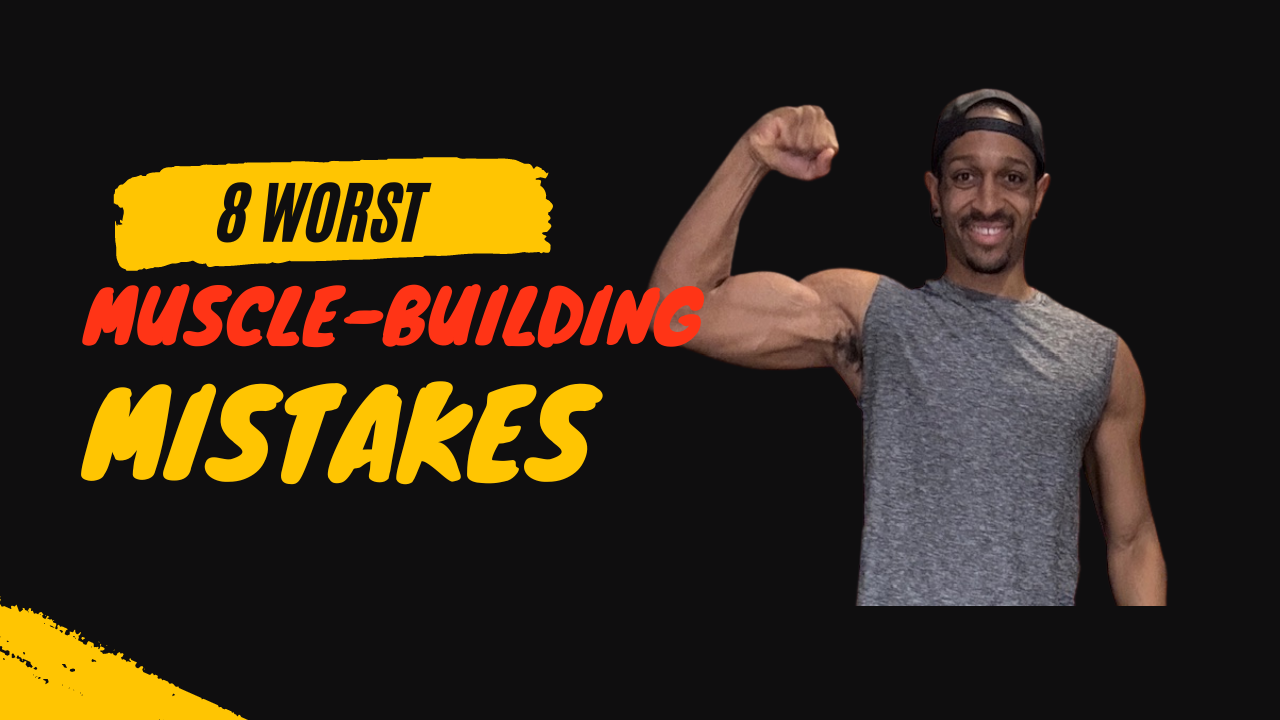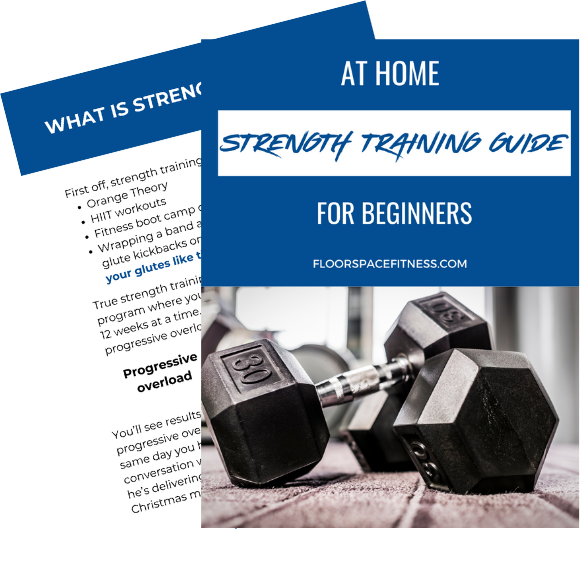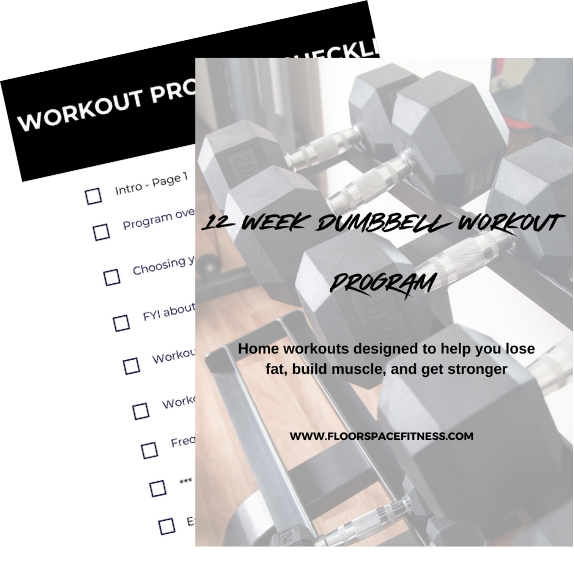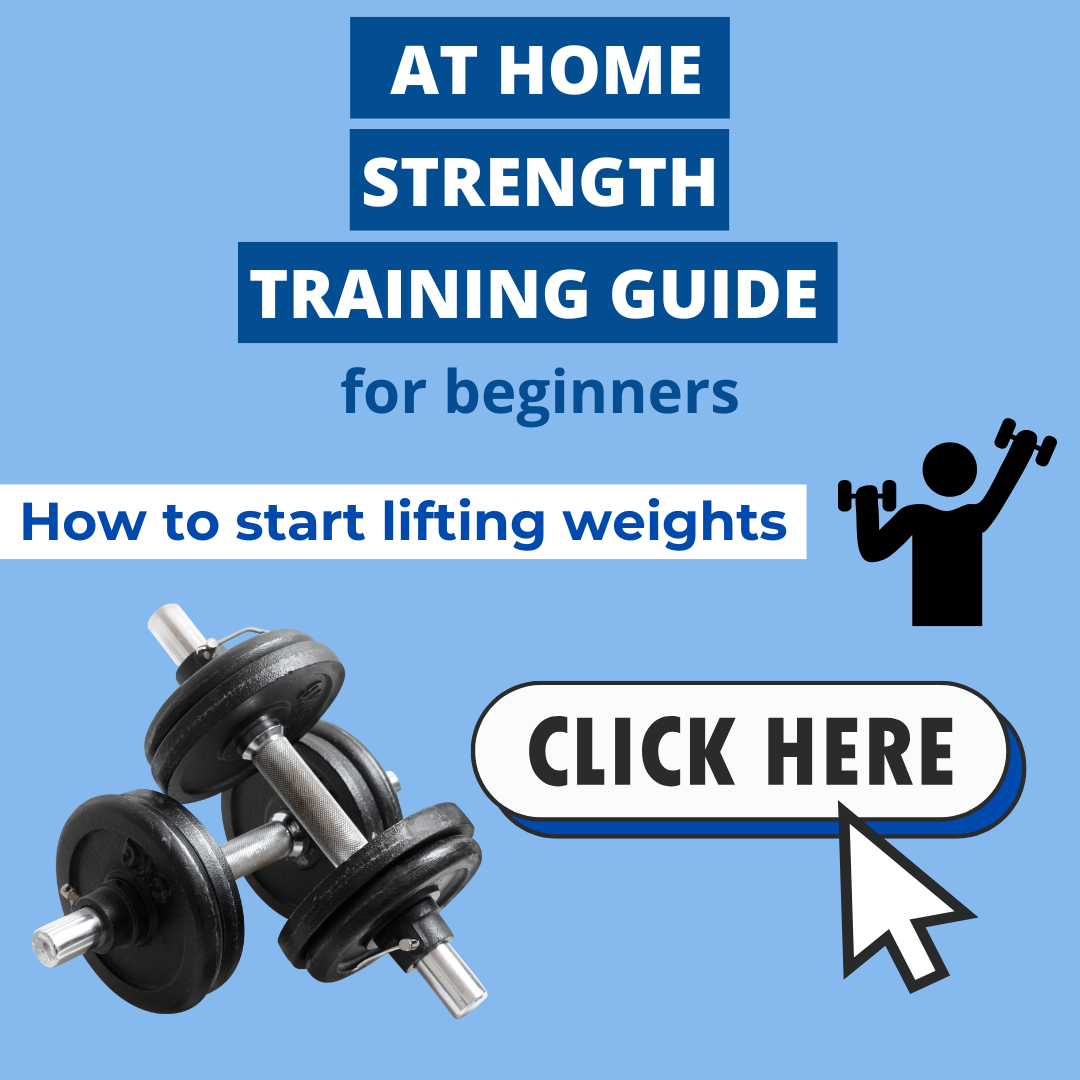
IN THIS POST
In this post, we’ll be walking through 8 of the most common muscle-building mistakes and how to fix them so you can make the most gains possible.
Sharing is caring.
Make sure to pin this post and tell a friend to tell a friend about it. 💪🏾

Intro: Muscle-building mistakes
The physique you’ve been desperately craving–the one that makes you go, “Is that really me?” as you pose and flex in the mirror with confidence–requires muscle.
But something you should know about muscle is that it does SO much more than make you look and feel good.
I feel like this doesn’t get talked about nearly enough but muscle is also functional.
Muscle allows you to do things like squat down to pick up a box and place it above your head.
It allows you to carry in all of your groceries in one trip (I don’t know about you but I’d rather lose circulation in one of my arms than make two trips 😂).
It allows you to pick your kids up and play with them or simply hold them in your arms.

That’s a pretty solid list already, right?
But we’re not done just yet.
Muscle also allows you to maintain your independence as you age.
When other people are complaining about all the little aches and pains they’re experiencing you won’t be able to relate.
You’ll be staying active and living a healthier, happier life.
In a nutshell, muscle is super important from both an aesthetic perspective as well as daily living and quality of life standpoint.
With that said, let’s dive into the meat and potatoes of this article.
Here are 8 of the worst muscle-building mistakes, plus how to fix them so you can stay on the progress path.

Mistake #1: Not eating enough overall calories
You lose fat by being in a calorie deficit, which means eating a little bit less than you normally would.
On the other hand, building muscle and achieving physique goals like growing your glutes or developing thicker arms and a bigger chest, require eating more.
Aka being in a calorie surplus.
“But if I eat more, won’t I gain weight?”
You’d be correct.
The same way a bottle of water overflows if you fill it up too much, you put on a little bit of weight by eating more calories than you need.
But that’s just the cost of doing business if you want to build muscle.
If your body had a voice this is what it would say when it comes to muscle growth:
“Oh, you’re giving me more food than you usually do? Cool, I’ll take this extra fuel and build the muscle you want.”
If you’re getting discouraged reading this and thinking being in a calorie surplus will make you put on all this excess weight, you have nothing to worry about.
Following the rest of what’s in this article will help you keep that fat gain to a minimum.
You’re going to eat slightly above maintenance (the number of calories you need to maintain your current weight).
Here’s how to calculate the number of calories you need to eat for your surplus:
Step 1
Use this calculator HERE to get your TDEE (also known as your maintenance calories). Put in all your info–age, weight, weight, activity level, etc–and it’ll spit that number out.
Step 2
Multiply your TDEE by 1.10. Those are your surplus calories. Let’s say your TDEE is 2,000 calories. Your surplus calories would be 2,200.
You can go higher than this (some people go as much as 500 calories above maintenance). It’ll just come down to how much body fat you’re willing to put on.
Mistake #2: Not consuming enough protein
Plants need water to grow, you need protein to build muscle.
Protein helps repair muscle tissue in between workouts (your muscles experience little mini micro tears when strength training) so they can grow back bigger and stronger.
Eat 0.7g-1g per pound of body weight in protein every single day to optimize muscle growth.
Related: How to eat more protein.
Mistake #3: Doing random workouts
Instead, get on an ACTUAL program.
Nope, the different workouts you compiled from social media don’t count as one.
A strength training program = doing the same batch of workouts 4-8 weeks at a time where you apply progressive overload (gradually increase the amount of weight you lift over time).
Progressive overload is pretty much the be-all-end-all for results.
Notice how I said heavier and heavier weights.
None of this 2.5 pound pink dumbbell stuff or lifting exclusively “lighter weight for reps.”
Put some weight on the bar or grab the heaviest set of dumbbells you can and get after it!
Push yourself 1-2 reps shy of failure on your sets to get the most out of your workouts.

Mistake #4: Focusing too much on cardio

This one plays off of the one above…
Weights.
Weights.
Weights.
That’s how you build muscle.
Dripping in sweat on a cardio machine like the elliptical or barely being able to catch your breath on the treadmill aren’t requirements.
Cardio has its place in a well-rounded workout plan but it should by no means be a priority when it comes to building muscle.
Strength training HAS TO BE numero uno, and by a landslide too.
Cardio-wise, I’d just focus on getting your daily 7.5K-10K steps.
Before you ask, yes, walking counts as exercise and cardio.
And no, how intense your steps are doesn’t matter.
Steps are steps.
You don’t have to be a race walker in the Olympics.
Related: How to get 10K steps a day.
Mistake #5: Being inconsistent
Results mirror consistency.
So if one day you’re hitting your calorie and protein goals, then the next day you’re not.
If you’re staying on track with your workouts for a couple weeks but then you fall off for a few weeks at a time.
If you hit your steps goal…
But it’s only every other day.
You’re essentially trying to catch water in a bottomless bucket as far as muscle-building goes.
It’s one thing to say, “Yeah, I’ve been pretty consistent” but it’s another thing to know for sure.
I’ve said this before on the blog but here’s an exercise you can do to measure just how consistent you actually are.
I got this from fitness trainer, Jordan Syatt.
Print off calendars for the next 2-3 months.
On days you stick to your fitness goals (I.e. do your workout, hit your calorie/protein goals, get your daily steps), give yourself a “Y.”
On days you don’t hit BOTH, give yourself a “N.”
You either get a “Y” for the day or a “N.”
There’s no letter in between.
There’s no room for, “But listen to what happened to me today!”
And that’s what makes this exercise so great.
It gives you a systematic, straightforward way to measure how consistent you are.
You’re not going to be perfect so throw that idea out the window.
Realize consistently good is a million times better than inconsistently perfect.
Being 80% consistent is a good benchmark to shoot for.
At the end of these 2-3 months, I want you to think about if your expectations truly match up with how consistent you’ve been.

Mistake #6: Waiting on motivation to take action
Sometimes, working out will be the very LAST thing you want to do.
Instead of grocery shopping and meal prep, you’d rather order a pizza and sit on the couch watching Netflix.
Point is, you won’t always feel motivated to do the things you know will help you build muscle.
Motivation is a feeling and just like any feeling it comes and goes.
Are you happy all day, 24/7?
Do you feel angry 100% of the time?
What about excitement? Do you always walk around feeling super excited about everyday life?
Naaaa.
But you take action anyway, regardless of how you feel.
You still go to work, take out the trash, do laundry, or wash dishes because you know it’s what needs to be done.
Motivation doesn’t work like this:
Motivation → Action → Results
It works like this:
Action → Results → Motivation.
Author David J. Schwartz said it best:
“People who get things done in this world don’t wait for the spirit to move them; they move the spirit.”
Mistake #7: Not recovering properly
You make gains while you’re resting and recovering so if you’re always in go, go go mode you won’t give your muscles a chance to do that.
What does good recovery look like? It looks like this:
- Having planned rest days (3 or 4 a week)
- 7-9 hours of sleep each night: You’ll have more energy to smash your workouts. If this isn’t attainable for you, just try to get an hour more than you currently are. That’ll make a HUGE difference.
- Taking advantage of deload weeks: Every 4-6 weeks, cut back on how much weight you lift and training volume (how many sets and reps you do).
- Making sure to consume enough of our dear friend, protein, to help repair and grow your muscles.
Mistake #8: Being impatient
You build a house brick by brick, one day at a time.
It doesn’t get finished your first day working on it.
Or really, anywhere even remotely close to that.
Building muscle works the same way.
It takes time (probably a lot longer than you want it to or think it will) so having patience is key.
Don’t get frustrated when you’re not seeing this amazing body transformation after a few weeks’ time.
Think about building muscle like this:
You’re dropping pebbles into a bucket.
Each individual day you stay on track is one pebble.
One pebble by itself won’t seem like a whole lot, right?
But what happens when you add all those “little” days together?
You end up with a full bucket, and that full bucket represents the muscle-building results you’re after.

What's up?
I’m Chad, I’m happy you’re here! I’m a certified personal trainer and my goal is to help you form practical, sustainable habits that lead to lifelong fitness results. If you want to lose fat, build muscle, and live a healthier, happier life then you’re right where you need to be. 💪🏾
Free resources
⬇⬇⬇







0 Comments